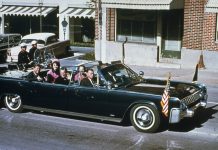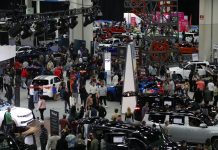If William Metzger, who died in 1933, could return to Detroit in September and mosey around the auto show that he co-founded 123 years ago, he would need to have a few things explained.
Metzger, the first sales manager for Cadillac Automobile Co. in 1902, would be pleased the brand is still around, unlike Oldsmobile, another outfithe was involved with. But in sizing up the Cadillac Celestiq show car, he would ask why anyone is bothering to produce electric cars again — and especially Cadillac, a gasser company to its core.
Besides the previously named endeavors, Metzger had already opened the city’s first car sales showroom at 254 Jefferson Ave., and one of his lines was the Waverley Electric.
This buggy-full-of- batteries was produced in Indianapolis until 1916, and then Waverley Co. faded out. By that time, the young auto industry was on its second generation of electric cars, but after 1920, gas engines prevailed.
Of course, when his head stopped spinning, Metzger would be told that lithium-ion battery chemistry was developed in the 1970s and today’s government- influenced industry is staking everything on converting over.
On his continuing tour of the 2022 North American International Auto Show — open to the public Sept. 17 to 25 in Huntington Place — Metzger would remember 1899, when he and hardware store owner Seneca Lewis leased the Light Guard Armory and organized the Tri-State Sportsman’s and Automobile Association.
The Armory, a castle-like bastion at the corner of Larned and Brush streets (a site now occupied by the Millender Center Apartments), hosted the Michigan Light Guard’s drills, but it also offered the large auditorium for public events.
“Ceremonies of an impressive nature were held in the Light-Guard Armory,” historian George Catlin wrote in 1923. Another writer reports that besides big-game trophies, the first exposition featured four cars. The Tri-State Sportsman’s and Automobile Association reprised its expo in each of the next two years, even adding a
dog show.
In 1902, with five car dealers now in the city, a bigger expo was held; Metzger still dominated it with three electric brands, two steamers, and three gassers.
The Detroit auto show went on through the decades at several locations, including the Michigan State Fairgrounds. There was a 12-year hiatus during and after World War II. The show moved to Cobo Center in 1965. Then, in 1989, the North American International Auto Show made its debut there with a much grander attitude.
But the NAIAS was suspended in 2020 because of COVID-19. It was set for a restart with a revised format in June 2021, but this idea was scotched.
Last December, Michigan lawmakers approved a $9 million grant to aid the auto show’s reboot. Now, after a 44-month hiatus, it’s set to coincide with late-summer weather and the traditional start of the new car model year rather than its previously established calendar slot each January.
Metzger would be comforted to see other brands familiar from ancient times: Ford, Lincoln, Chevrolet, Buick, GMC, Chrysler, and Dodge. (Representing overkill beyond any rational thought, the GMC Hummer EV might make him decide to retreat to the afterlife.) He would also be agog at the show’s interactive features and the emphasis on technology, especially where it concerns EVs and autonomous mobility.
This thrust is represented in the show’s busy new logo, which not only adopts a trendy green and blue palette to represent “clean energy pathways and transformative technologies” but also reintegrates the previous spirit-of-motion figure and prominently adds “Detroit” to reflect the celebration of community.
This story is from the September 2022 issue of Hour Detroit magazine. Read more in our digital edition.
|
|
|










